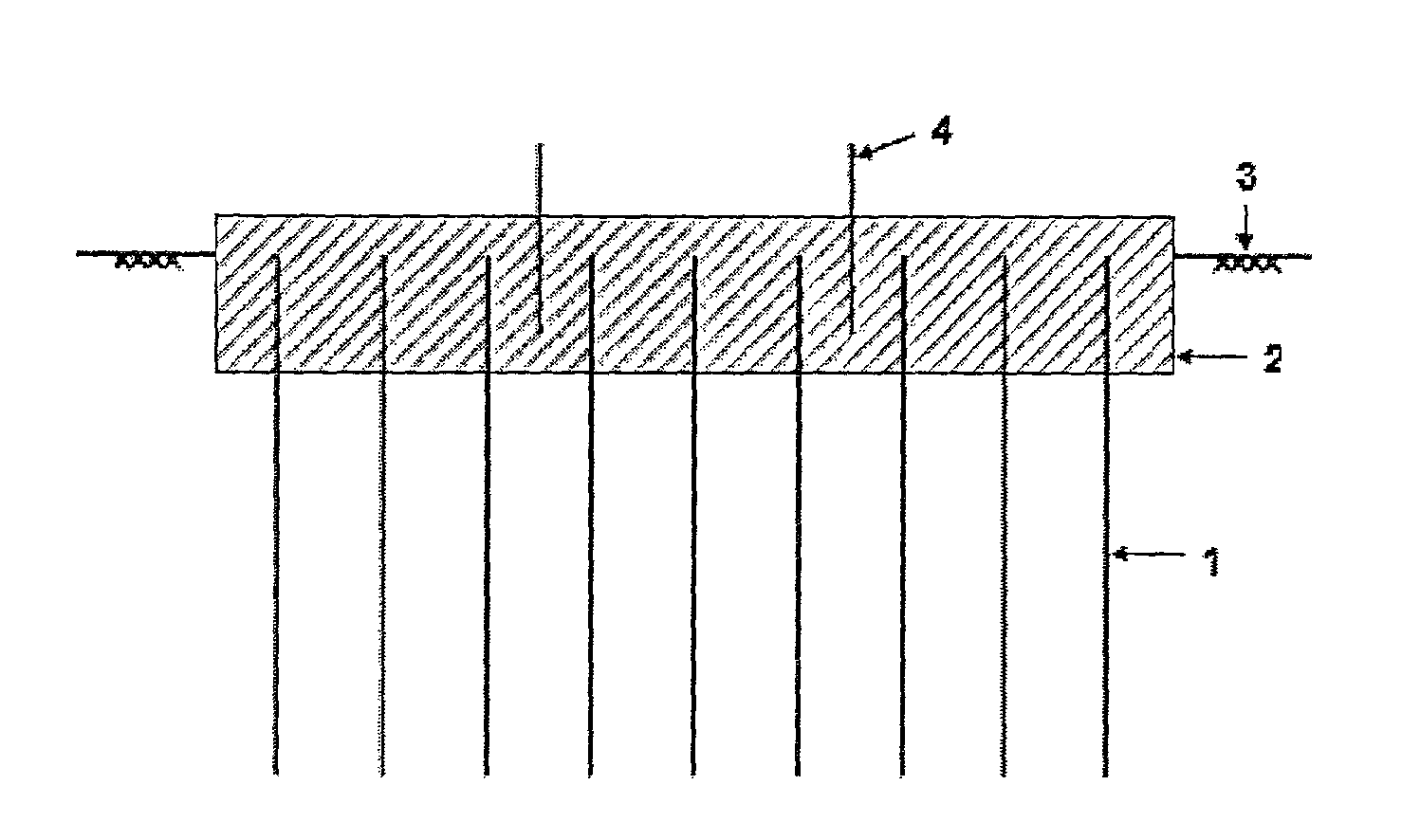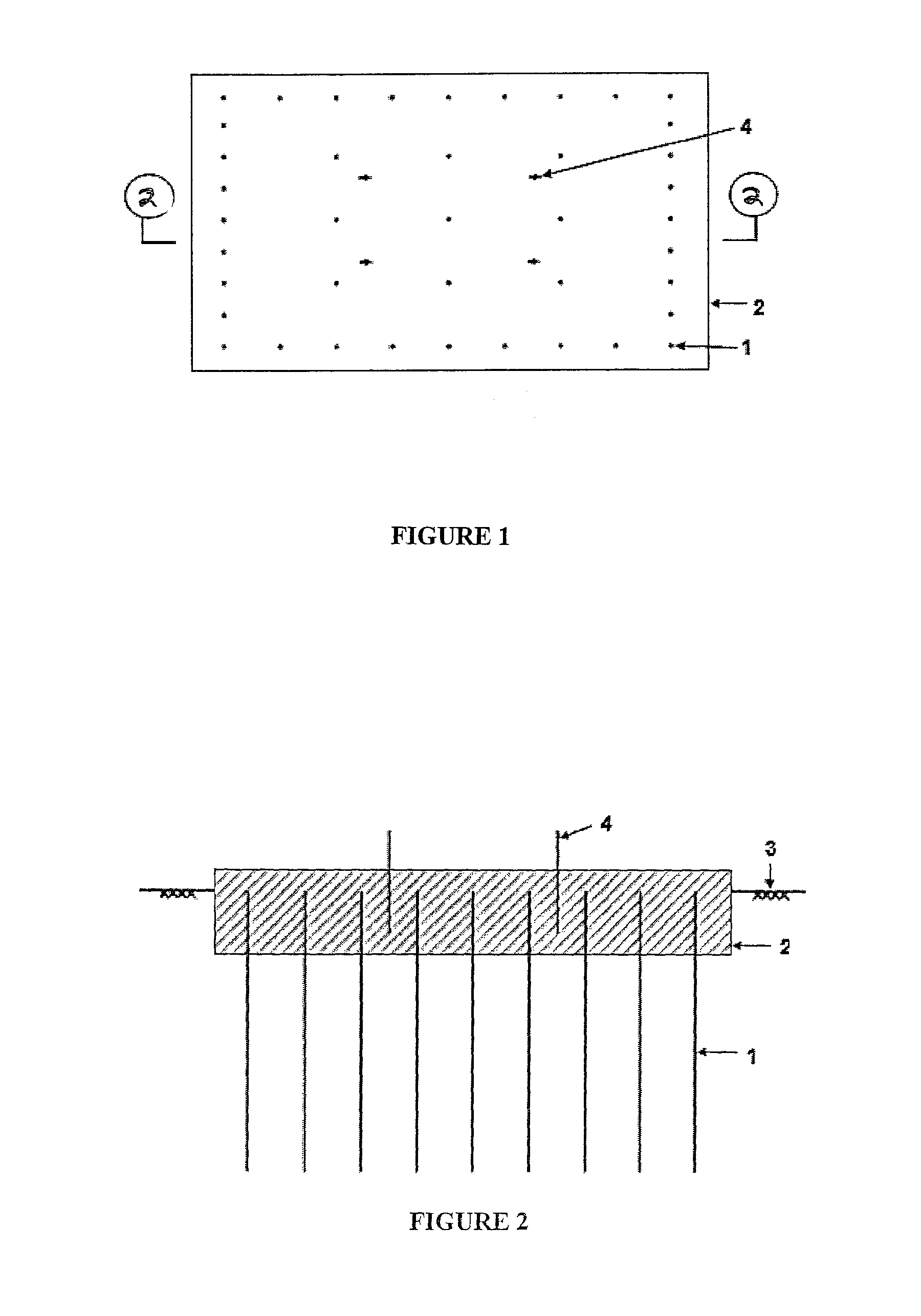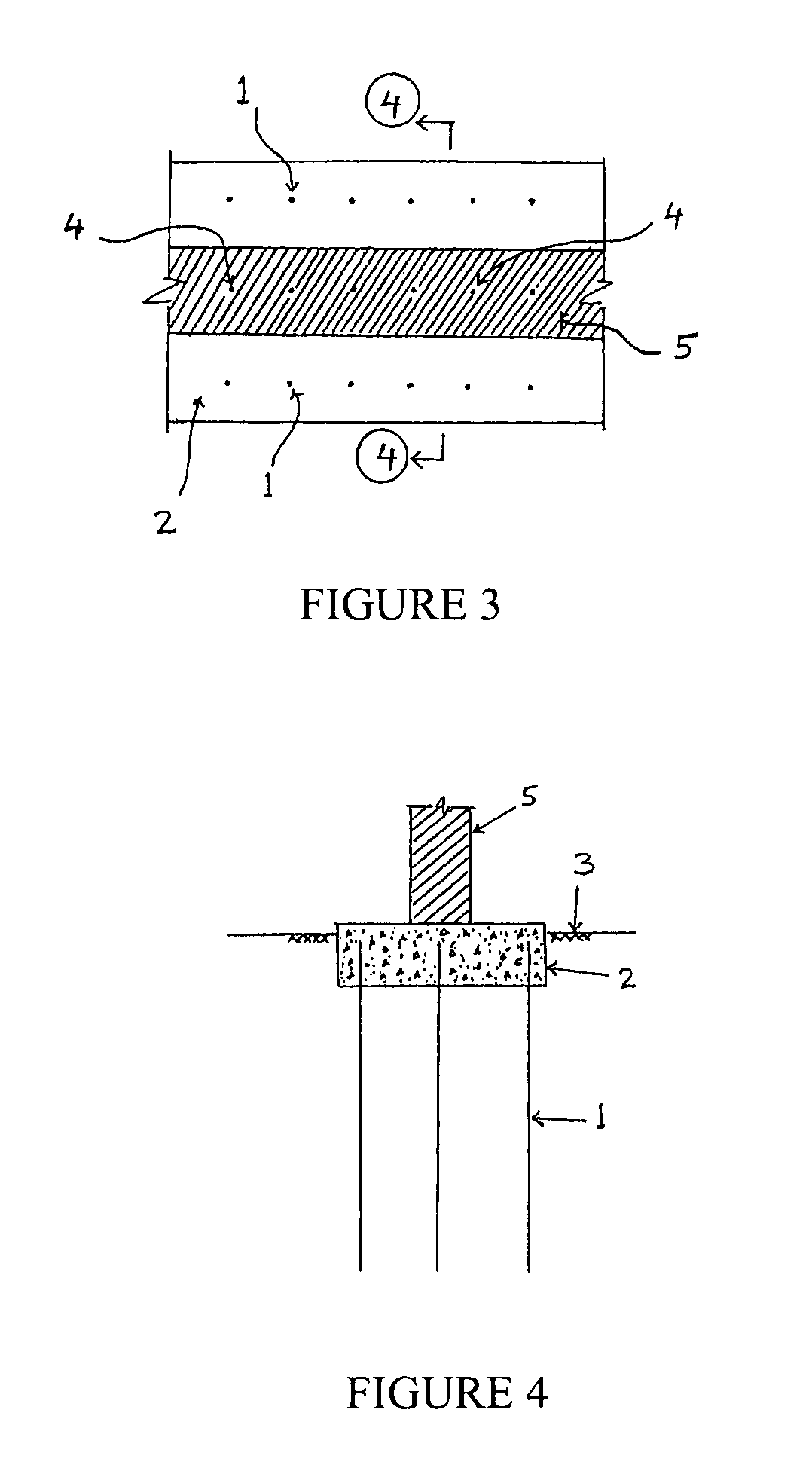Soil anchor footing
a technology of soil anchors and footings, which is applied in the field of soil anchor footings, can solve the problems of large volume of concrete, large excavation, and more soil disposal, and achieve the effects of easy construction, low weight, and low cos
- Summary
- Abstract
- Description
- Claims
- Application Information
AI Technical Summary
Benefits of technology
Problems solved by technology
Method used
Image
Examples
Embodiment Construction
[0035]In connection with a first embodiment of a soil anchoring footing as constructed in accordance with the principles and teachings of the present invention, the first embodiment soil anchoring footing is illustrated in FIGS. 1 and 2. This type of footing can be constructed in two ways—as a cast-in-situ type, and as a pre-cast type. In connection with the cast-in-situ type, the ground is first excavated for the top slab, 150 mm to 350 mm deep, depending upon the thickness of the slab. After this, about 0.3 m to 2 m long deformed steel or fiber reinforced polymer (FRP) anchor bars 1, 12 mm to 36 mm diameter, are pushed individually into the ground 3 by means of an industrial hammer, or in groups, using pile driving equipment or a mobile press, leaving approximately 150 mm to 350 mm of the upper portions of the anchor bars 1 exposed above ground. As the anchor bars 1 have deformed surfaces, and as they are pushed into the ground 3, they exhibit good soil anchorage capacity resultin...
PUM
 Login to view more
Login to view more Abstract
Description
Claims
Application Information
 Login to view more
Login to view more - R&D Engineer
- R&D Manager
- IP Professional
- Industry Leading Data Capabilities
- Powerful AI technology
- Patent DNA Extraction
Browse by: Latest US Patents, China's latest patents, Technical Efficacy Thesaurus, Application Domain, Technology Topic.
© 2024 PatSnap. All rights reserved.Legal|Privacy policy|Modern Slavery Act Transparency Statement|Sitemap



